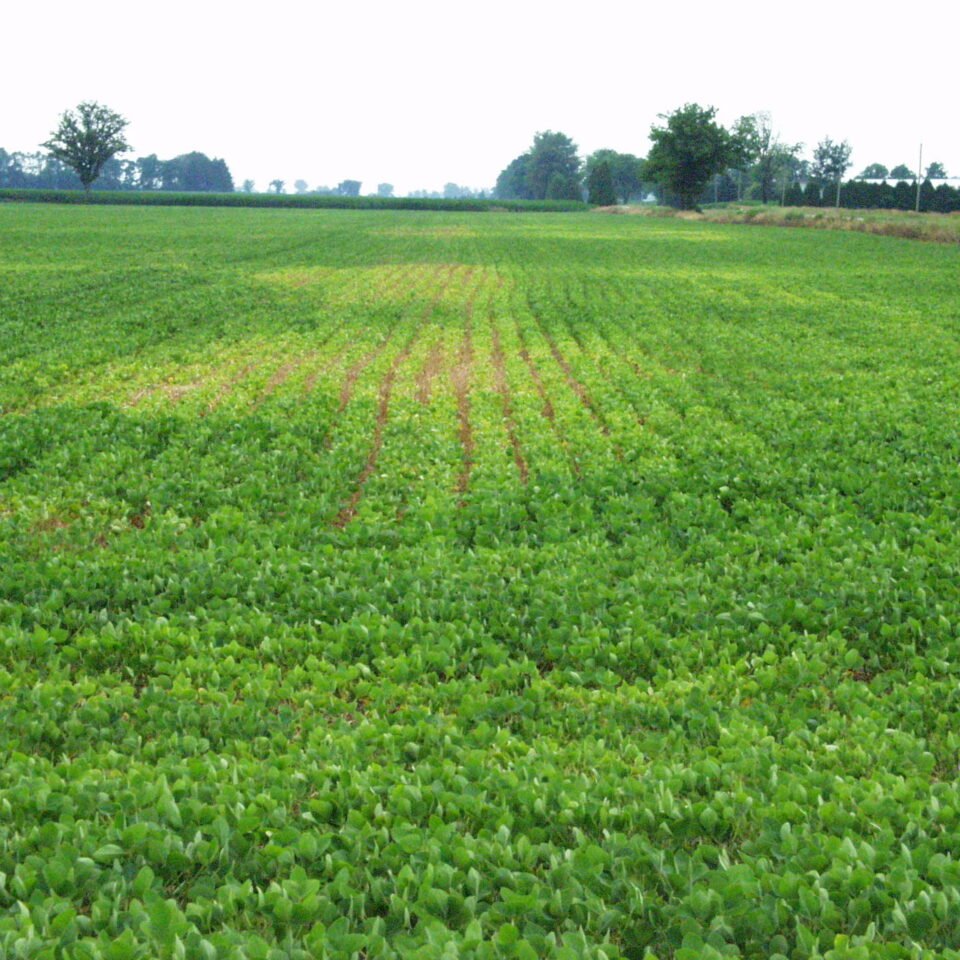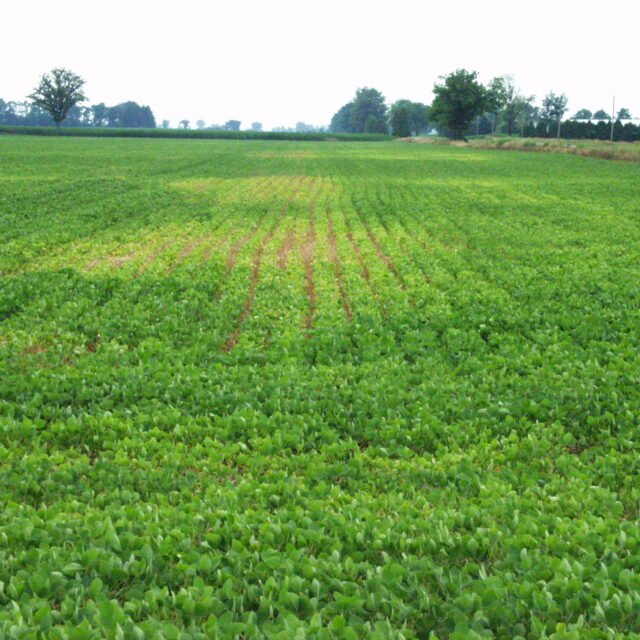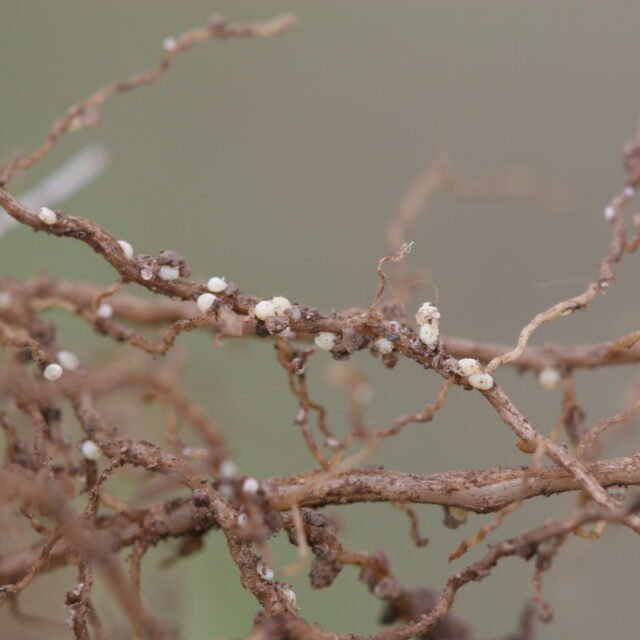
Soybean cyst nematode (SCN) is a microscopic roundworm, related to parasitic roundworms that infect livestock and pets. Once established, SCN is impossible to eradicate. It is important to learn how to manage the pest in order to reduce its impact on yield.
The juvenile females cause damage to the plant through feeding and the indirect effects of feeding. The soybean cyst is actually the dead form of the female worm, and each cyst contains up to 500 eggs. The cyst helps protect the eggs from the surrounding soil environment, allowing them to stay dormant for years and completing up to six generations throughout a growing season.

Damage
Damage from SCN does not always show up in the field. Visual symptoms are highly variable and can range from no visible symptoms to stunting, yellowing and plant death. These symptoms are often confused for other issues in soybean production such as nutrient deficiencies, herbicide injury, and soil compaction among others. Visual symptoms are often less prevalent in higher yielding fields and when soil has adequate moisture. The only way to be certain of an SCN infestation is to identify its presence in the field.
IMAGE (left): SCN damage in soybean field.
IMAGE SOURCE: Crop Protection Network

Identification
The best time to look for SCN is when the soybean crop is beginning to flower, showing stunted areas of the field where populations may be high. The only way to find the nematodes is to look for the cysts on the roots. Plants must be dug up very carefully, as the cysts can easily be knocked off. Gently remove the soil from the roots and look for the pin-head sized white cysts on the roots. The presence of cysts confirm an infestation, but does not tell much information on the population numbers that are present. The only reliable way of knowing the level of infestation is to have a soil sample analyzed for nematodes.
IMAGE (right): SCN cysts on soybean roots.
IMAGE SOURCE: Crop Protection Network
Sampling for SCN
Taking a soil sample to find out populations of SCN present must be taken differently from a standard soil fertility sample.
- In-season is the best time to sample, but can also be done late in a warm spring in fields that are going into soybeans.
- 12-20 cores must be taken for each sample.
- Cores must be taken 8” deep, discarding the top 1-2” of each core.
- Take soil cores in a zig-zag pattern throughout the field.
- Take one sample (10-20 cores) for each 10-20 acres of the field.
- Sample areas of similar soil type (ex. sand knolls separate from low, clay ground)
- Store samples in a cool, dark place until sent to the laboratory (cooler or refrigerator). DO NOT FREEZE.
Interpreting Test Results
The results coming from the laboratory will give you the number of nematode eggs per 100 grams of soil. Knowing what these numbers mean will help you to make further management decisions regarding the pest. When populations are above 2000 eggs/100g and nearing 10,000 eggs, even resistant varieties can be damaged.
| Eggs per 100g of Soil | Infestation Level | Potential Yield Loss |
| 0 to 500 | Low | 0% to 20% |
| 500 to 1,000 | Low | 0% to 20% |
| 1,000 to 2,000 | High | 20% to 50% |
| 2,000 to 10,000 | Dangerous | 50% to 100% |
Management Strategies
There are a number of things that you can do to try and control SCN populations. Once SCN has appeared in a field, there is no way to eradicate the pest, so strategies that help resist the current number of nematodes and prevent the population from rising are the best options for control.
- Plant SCN resistant varieties.
- Rotate resistant varieties to avoid the nematodes ability to adapt and resist.
- Rotate sources of resistance as well, including PI 88788, Peking, and Hartwig.
- Rotate with non-host crops such as corn, cereals, alfalfa or vegetables.
- Also avoid cover crops that are a host of SCN.
- Plant cover crops that reduce SCN populations such as red clover.
- Keep weeds controlled. Some weeds such as shepherd’s purse and chickweed serve as hosts for SCN.
- Wash off farm equipment when moving between fields where SCN is present.
- Seed treatments containing nematicides such as ILeVO or Clariva may be available on certified seed.
Additional Sources:
OMAFRA Pub 811: Agronomy Guide for Field Crops, Soybean Cyst Nematode Agronomic Sheet by Dow Seeds, South Dakota Soybean Association, Purdue University Field Crop IPM, OMAFRA